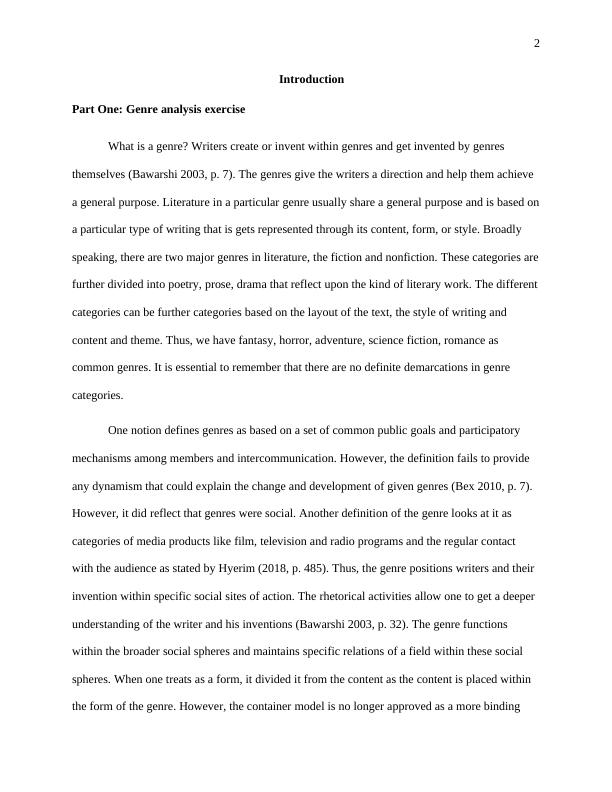Genre Analysis and Adaptation
7 Pages2316 Words41 Views
Added on 2023-03-17
About This Document
This document explores the concept of genre analysis and adaptation in literature and film. It discusses the role of genres in shaping literary works and the debate around film authorship. The document provides an overview of different genres and their characteristics, as well as the interrelations between genres. It also examines the collaborative nature of film production and the different theories of film authorship. The document includes a bibliography of relevant sources for further reading.
Genre Analysis and Adaptation
Added on 2023-03-17
ShareRelated Documents
End of preview
Want to access all the pages? Upload your documents or become a member.



